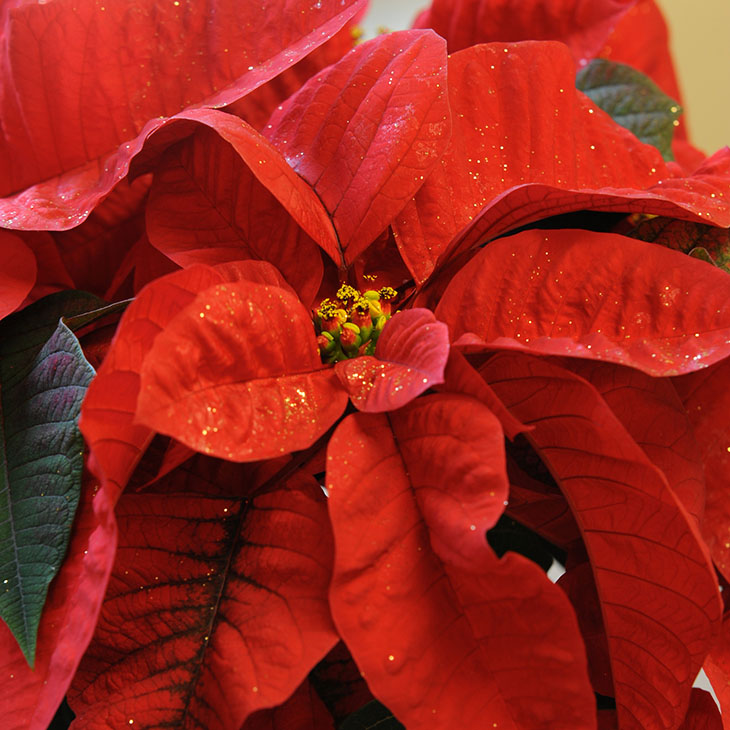
Holiday poinsettias add a splash of color to home décor
Monday, December 14, 2020
Although Christmas trees take center stage when it comes to holiday decorations, poinsettias should not be overlooked. These beautiful holiday plants are more than just another red highlight – varieties include yellow, blue and orange – and they can brighten homes throughout the season.
Check local nurseries and the gardening section of home improvement stores for a large selection of poinsettias, said David Hillock, Oklahoma State University Extension consumer horticulturist.
“When shopping for a poinsettia, select a plant with well-expanded, well-colored bracts. The foliage on the plant should be medium to dark green with uniform coloring and there should be flowers in the center,” Hillock said. “While still fairly delicate, poinsettias are more durable today than in previous years.”
Care of the plant begins as soon as they’re purchased. If the outdoor temperature is less than 50 degrees, ask the store to wrap the plant in protective material such as newspaper or plastic so it can be transported to the car without damage.
At home, attention should shift to light, water and warmth. Because poinsettias are temperature-sensitive, Hillock said don’t place them in areas that are exposed to cold drafts, such as doors leading outdoors. In addition, plants shouldn’t be placed near excessive heat, such as air vents, heat-emitting electronics or incandescent lamps. Ideally, poinsettias do best in temperatures ranging from 55 to 70 degrees.
“As far as lighting requirements, poinsettias need six to eight hours of natural or artificial light each day. For artificial light, this would be about the same as good desk lighting in an office setting,” he said. “Incandescent lights such as those found in most homes will give a truer, brighter bract color than most types of fluorescent light.”
Put poinsettias with other house plants to take advantage of their variety of colors and textures. The adjacent plants will raise the humidity, which in turn will help the poinsettias last longer.
As with other house plants, proper watering is a must to ensure plant health. Good drainage is necessary to help prevent root rot. Hillock said many commercial growers use a non-soil potting mix, which can sometimes make it difficult to determine when the plant needs to be watered. The best method for checking to see if the plant needs a drink is to simply lift the pot: If it’s heavy, the plant has plenty of water; if it’s light and the planting mix is dry, a thorough watering is needed.
Hillock said to water the plant until water drips through the drainage holes of the container. If the plant came with a festive foil wrap, punch a couple of holes in the wrap to allow excess water to drain. If the plant sits in excess water, it may become a victim of root rot. On the other hand, don’t let the plant stay dry for too long as this will cause wilting and the leaves will drop.
Hillock also addressed the plant’s less positive reputation.
“Many people are under the impression that poinsettias are poisonous. They aren’t poisonous, but they are mildly toxic,” he said. “The milky white sap contains chemicals similar to those in detergents, and when large quantities are ingested, can cause mild signs of vomiting, drooling or sometimes diarrhea. Try to keep these holidays plants out of the reach of small children and pets.”
Learn more about poinsettia care in this segment of OSU Extension’s Oklahoma Gardening show.
MEDIA CONTACT: Trisha Gedon | Agricultural Communications Services | 405-744-3625 | trisha.gedon@okstate.edu
